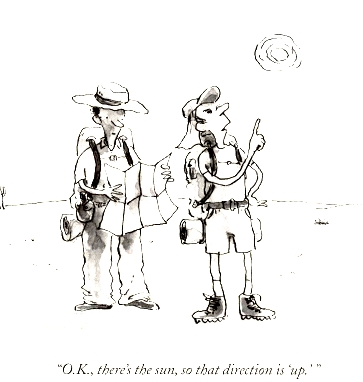Hats off to CFE Media (www.cfemedia.com/) for their stream of continuous innovation. The company was founded a year ago to take over a number of engineering-focused titles that were shed by Reed Business Information. CFE is lead by a progressive team of two former Reed publishers, who decided to approach their editorial and advertising strategy differently. Motivated by a B2B marketplace that was characterized by falling print advertising and limited online ad sales, the management team deployed some critical new ways to approach the B2B engineering marketplace that takes full advantage of proven consumer models, leverages the interactive nature of the internet, and retains the best parts of their existing Publishing model. But above all else, CFE Media considered the concerns and issues facing their readership and focused on helping them make better business decisions. Their approach has created valuable differentiation from their competitors and allowed CFE to grow their business despite challenging economic times. Here are three important lessons for you to consider.
Lesson 1: Whether you are a vendor or a publisher – remember to put the needs of your reader first
Too many companies have forgotten their customer and what it takes to make thing better or easier for them to get their jobs done. As economic times have gotten tough, many have used the down economy as a crutch as to why their business has slowed. Very often, the reason why the business has slowed is because companies have forgotten who they serve. For publishers, this often means they have lost direct contact with their readers. They’ve stopped surveying, meetings and calling readers to find out what is working well and what is not. Luckily for CFE, this is not their business style. The management team immediately deployed a strategy which called for heavy reader feedback and tools which allowed for an honest assessment of what is working and what is not. The result has greatly changed the publishing product that CFE produces. And if you watch the way change is deployed, it is not done in one major revision, but rather as a set of smaller continuous improvements. I know that CFE’s offering will continue to evolve over the years because their business model recognizes that readers’ involvement with media is changing as well and their continuous interaction with the reader ensures that their products and services change right along with them.
Lesson 2: Know what you want to achieve and find ways to measure progress
In some ways, the CFE approach was amazingly simple. With a strong focus on their readers’ interests, CFE went off to recast their publishing model. Nothing was sacred…except their core focus. First, they reviewed what was working from their existing processes. If there wasn’t a way to measure how effectively a program was working, then a metric was created. In some cases, automation was used; in other cases they simply called groups of readers to get honest opinions from their audience. The results? CFE came up with a wide variety of approaches that – while popular in the consumer market – have not been widely applied in the B2B space. These range from content marketing, to creative use of video for education, to connecting readers with hard-to-reach industry experts and peers, and finally to providing educational materials that readers can immediately use in their day to day work life.
Lesson 3: Leverage the Power of Open Publishing
CFE is working hard to embrace the power and flexibility that Open Publishing brings to their customers. Open Publishing is centered on the idea that content created in one place can be shared in multiple locations around the web (think YouTube videos) so that it is fast and easy for readers to discover. Many B2B sponsors are looking to support content on a publisher’s website, but they also want ways to bring that content back to their own site. CFE already delivers a number of content creation strategies which allow for this open publishing model to exist, but working with MediaSolve, they will soon be greatly expanding this offering with a set of unique solutions for sharing debate, webcasts, videos and more. With CFE leading the way in the engineering space, B2B buyers and decisions makers will more easily be able to engage with high value engineering content from the sources they trust most at the websites they frequent most often.
To learn more about CFE and to see some of their innovations in action, check out this recent interview that B2B Media conducted with Steve Rourke, CFE’s CEO http://www.btobonline.com/apps/pbcs.dll/article?AID=/20100812/MEDIABUSINESS/100809934 or visit their publications’websites at www.controleng.com, www.plantengineering.com, or www.csemag.com . Congratulations again CFE on your continuous innovation and product improvements. Your work shows that the right type of innovation – that fits both the reader’s and sponsor’s needs – and is delivered in a package that is intuitive and easy to use is just the prescription needed to help ailing B2B magazines.







